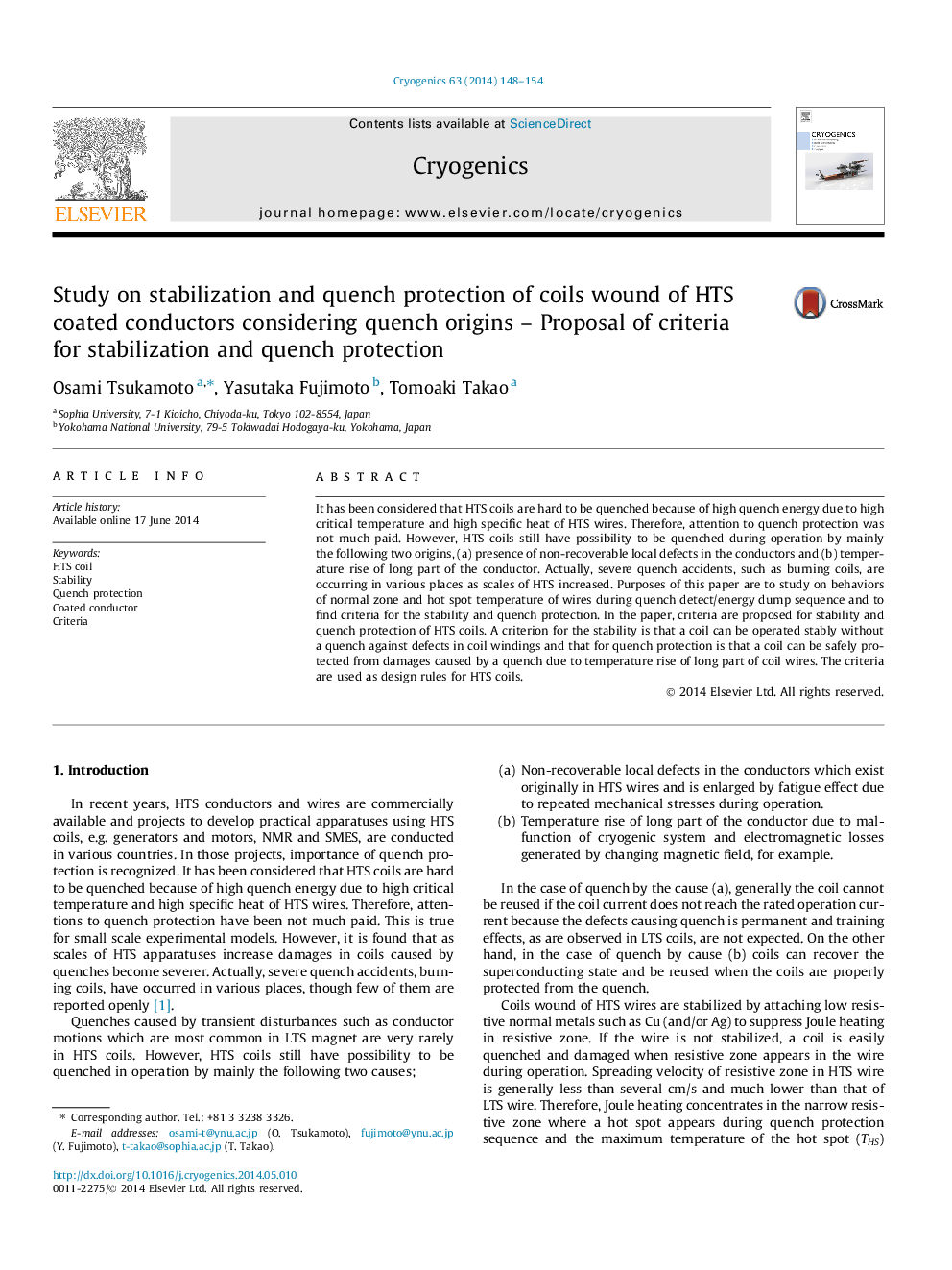| Article ID | Journal | Published Year | Pages | File Type |
|---|---|---|---|---|
| 1507475 | Cryogenics | 2014 | 7 Pages |
•Quench is caused by two quench origins, defect in CC and temperature rise.•Threshold of size of a defect to cause a quench damaging a coil or not.•Threshold length of resistive zone to cause a quench damaging a coil or not.•Criterion of size of defect for stable operation of coil is defined, MAD.•Criterion of length of resistive zone for safe quench protection, MALRZ.
It has been considered that HTS coils are hard to be quenched because of high quench energy due to high critical temperature and high specific heat of HTS wires. Therefore, attention to quench protection was not much paid. However, HTS coils still have possibility to be quenched during operation by mainly the following two origins, (a) presence of non-recoverable local defects in the conductors and (b) temperature rise of long part of the conductor. Actually, severe quench accidents, such as burning coils, are occurring in various places as scales of HTS increased. Purposes of this paper are to study on behaviors of normal zone and hot spot temperature of wires during quench detect/energy dump sequence and to find criteria for the stability and quench protection. In the paper, criteria are proposed for stability and quench protection of HTS coils. A criterion for the stability is that a coil can be operated stably without a quench against defects in coil windings and that for quench protection is that a coil can be safely protected from damages caused by a quench due to temperature rise of long part of coil wires. The criteria are used as design rules for HTS coils.
